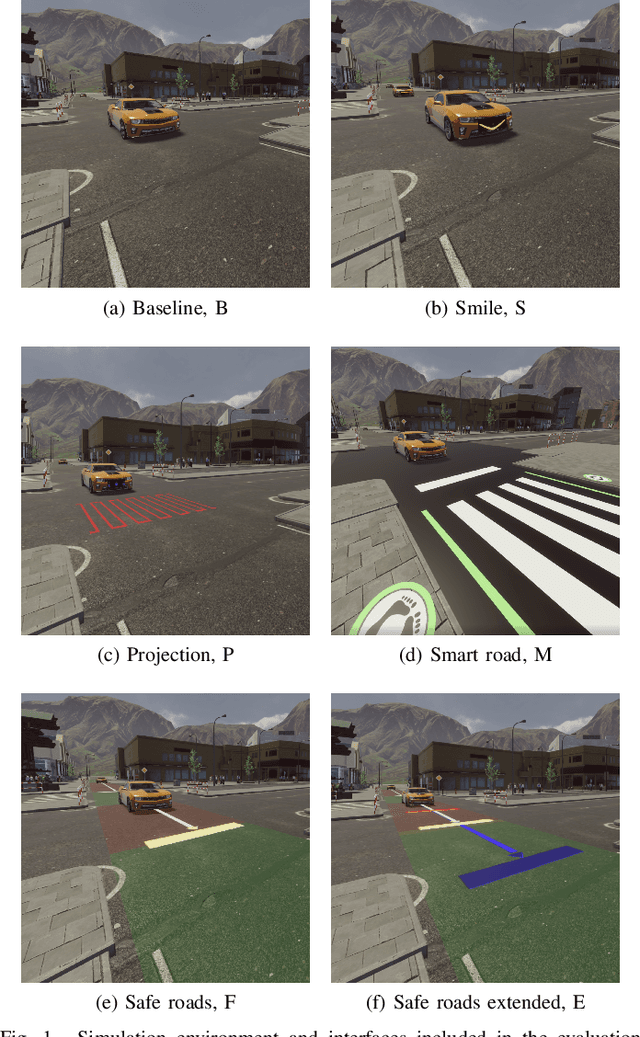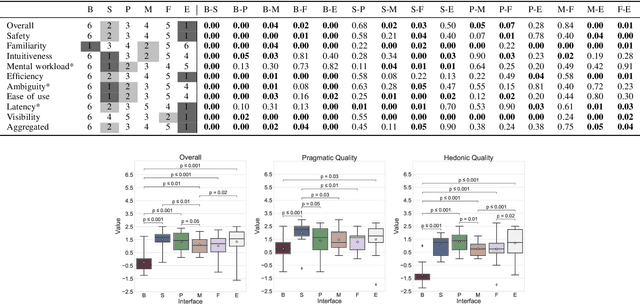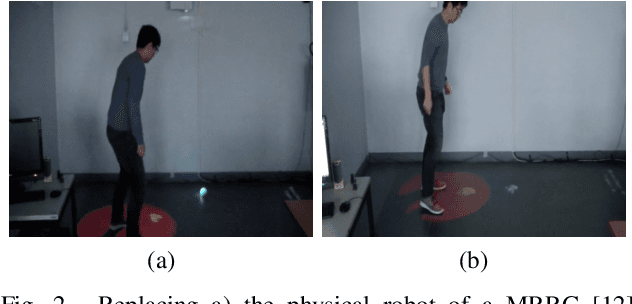F. Gabriele Pratticò
Politecnico di Torino
Comparing State-of-the-Art and Emerging Augmented Reality Interfaces for Autonomous Vehicle-to-Pedestrian Communication
Feb 04, 2021



Abstract:Providing pedestrians and other vulnerable road users with a clear indication about a fully autonomous vehicle status and intentions is crucial to make them coexist. In the last few years, a variety of external interfaces have been proposed, leveraging different paradigms and technologies including vehicle-mounted devices (like LED panels), short-range on-road projections, and road infrastructure interfaces (e.g., special asphalts with embedded displays). These designs were experimented in different settings, using mockups, specially prepared vehicles, or virtual environments, with heterogeneous evaluation metrics. Promising interfaces based on Augmented Reality (AR) have been proposed too, but their usability and effectiveness have not been tested yet. This paper aims to complement such body of literature by presenting a comparison of state-of-the-art interfaces and new designs under common conditions. To this aim, an immersive Virtual Reality-based simulation was developed, recreating a well-known scenario represented by pedestrians crossing in urban environments under non-regulated conditions. A user study was then performed to investigate the various dimensions of vehicle-to-pedestrian interaction leveraging objective and subjective metrics. Even though no interface clearly stood out over all the considered dimensions, one of the AR designs achieved state-of-the-art results in terms of safety and trust, at the cost of higher cognitive effort and lower intuitiveness compared to LED panels showing anthropomorphic features. Together with rankings on the various dimensions, indications about advantages and drawbacks of the various alternatives that emerged from this study could provide important information for next developments in the field.
Mixed-Reality Robotic Games: Design Guidelines for Effective Entertainment with Consumer Robots
Jul 30, 2020



Abstract:In recent years, there has been an increasing interest in the use of robotic technology at home. A number of service robots appeared on the market, supporting customers in the execution of everyday tasks. Roughly at the same time, consumer level robots started to be used also as toys or gaming companions. However, gaming possibilities provided by current off-the-shelf robotic products are generally quite limited, and this fact makes them quickly loose their attractiveness. A way that has been proven capable to boost robotic gaming and related devices consists in creating playful experiences in which physical and digital elements are combined together using Mixed Reality technologies. However, these games differ significantly from digital- or physical only experiences, and new design principles are required to support developers in their creative work. This papers addresses such need, by drafting a set of guidelines which summarize developments carried out by the research community and their findings.
 Add to Chrome
Add to Chrome Add to Firefox
Add to Firefox Add to Edge
Add to Edge